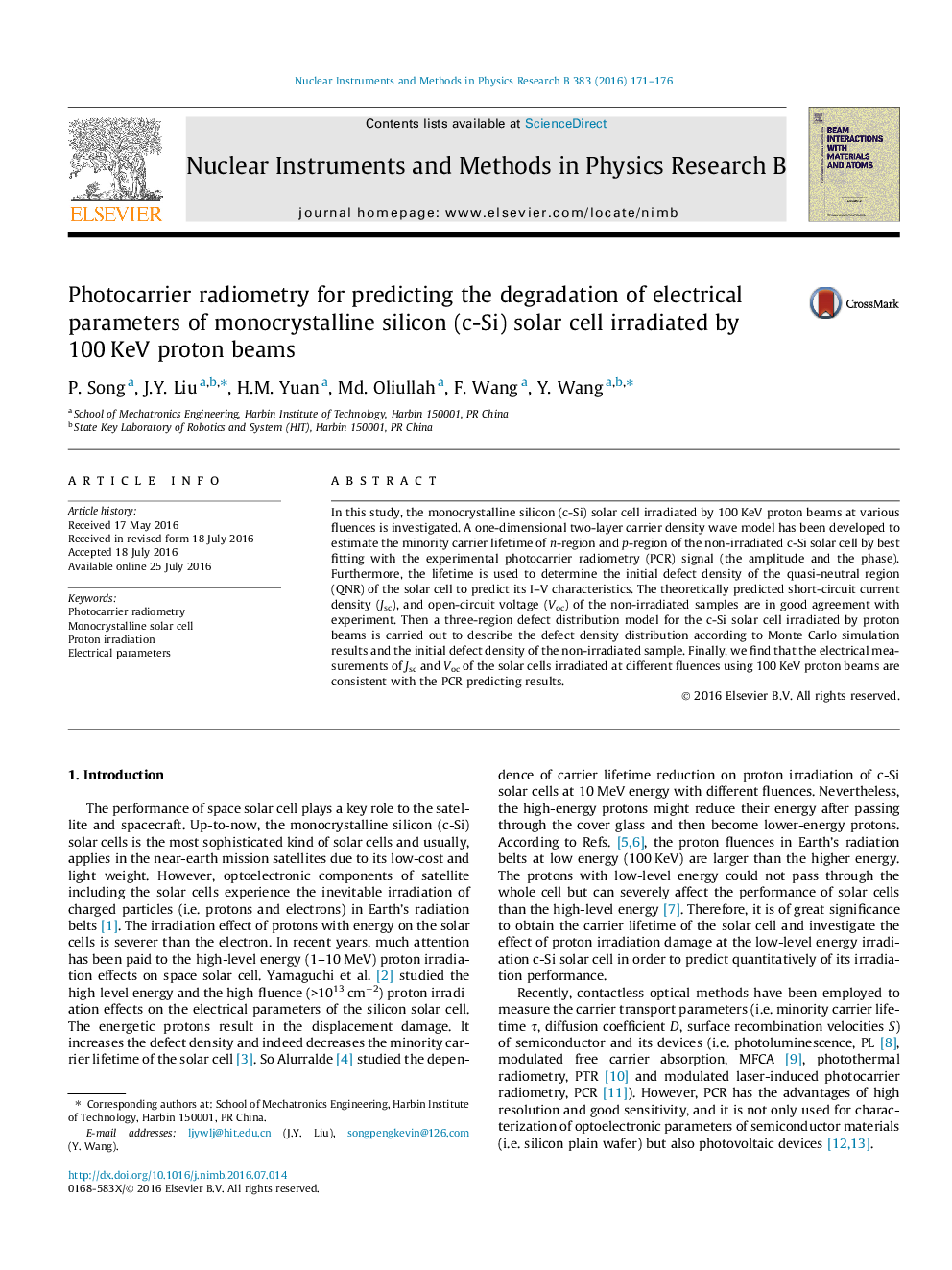| Article ID | Journal | Published Year | Pages | File Type |
|---|---|---|---|---|
| 8039664 | Nuclear Instruments and Methods in Physics Research Section B: Beam Interactions with Materials and Atoms | 2016 | 6 Pages |
Abstract
In this study, the monocrystalline silicon (c-Si) solar cell irradiated by 100Â KeV proton beams at various fluences is investigated. A one-dimensional two-layer carrier density wave model has been developed to estimate the minority carrier lifetime of n-region and p-region of the non-irradiated c-Si solar cell by best fitting with the experimental photocarrier radiometry (PCR) signal (the amplitude and the phase). Furthermore, the lifetime is used to determine the initial defect density of the quasi-neutral region (QNR) of the solar cell to predict its I-V characteristics. The theoretically predicted short-circuit current density (Jsc), and open-circuit voltage (Voc) of the non-irradiated samples are in good agreement with experiment. Then a three-region defect distribution model for the c-Si solar cell irradiated by proton beams is carried out to describe the defect density distribution according to Monte Carlo simulation results and the initial defect density of the non-irradiated sample. Finally, we find that the electrical measurements of Jsc and Voc of the solar cells irradiated at different fluences using 100Â KeV proton beams are consistent with the PCR predicting results.
Related Topics
Physical Sciences and Engineering
Materials Science
Surfaces, Coatings and Films
Authors
P. Song, J.Y. Liu, H.M. Yuan, Md. Oliullah, F. Wang, Y. Wang,
